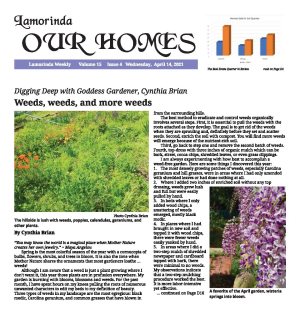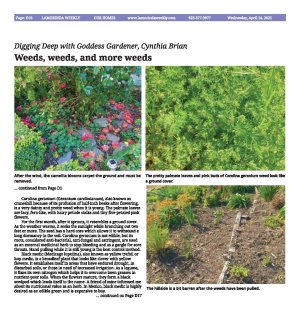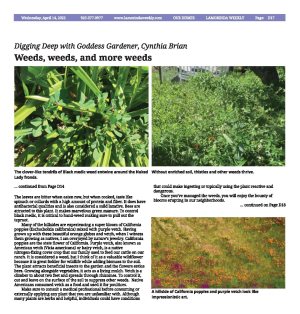|
|
| Digging Deep with Goddess Gardener, Cynthia Brian |
| Weeds, weeds, and more weeds |
| By Cynthia Brian |
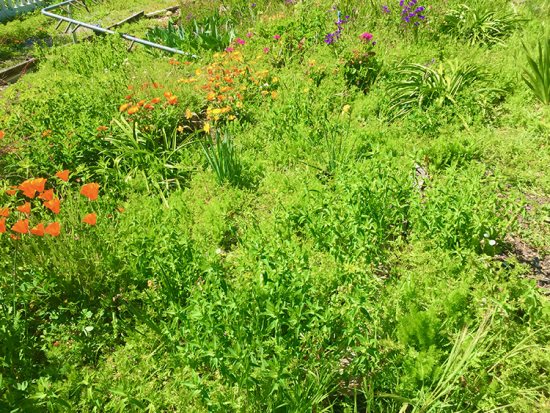 |
| The hillside is lush with weeds, poppies, calendulas, geraniums, and other plants. Photo Cynthia Brian |
“You may know the world is a magical place when Mother Nature creates her own jewelry.” ~ Maya Angelou
 Spring is the most colorful season of the year with a cornucopia of bulbs, flowers, shrubs, and trees in bloom. It is also the time when Mother Nature shares the ornaments that most gardeners loathe . weeds! Spring is the most colorful season of the year with a cornucopia of bulbs, flowers, shrubs, and trees in bloom. It is also the time when Mother Nature shares the ornaments that most gardeners loathe . weeds!
 Although I am aware that a weed is just a plant growing where I don’t want it, this year those plants are in profusion everywhere. My garden is bursting with blooms, blossoms and weeds. For the past month, I have spent hours on my knees pulling the roots of numerous unwanted characters to edit my beds to my definition of beauty. Three types of weeds in my landscape are the most egregious: black medic, Carolina geranium, and common grasses that have blown in from the surrounding hills. Although I am aware that a weed is just a plant growing where I don’t want it, this year those plants are in profusion everywhere. My garden is bursting with blooms, blossoms and weeds. For the past month, I have spent hours on my knees pulling the roots of numerous unwanted characters to edit my beds to my definition of beauty. Three types of weeds in my landscape are the most egregious: black medic, Carolina geranium, and common grasses that have blown in from the surrounding hills.
 The best method to eradicate and control weeds organically involves several steps. First, it is essential to pull the weeds with the roots attached as they develop. The goal is to get rid of the weeds when they are sprouting and, definitely before they set and scatter seeds. Second, enrich the soil with compost. You will find more weeds will emerge because of the nutrient-rich soil. The best method to eradicate and control weeds organically involves several steps. First, it is essential to pull the weeds with the roots attached as they develop. The goal is to get rid of the weeds when they are sprouting and, definitely before they set and scatter seeds. Second, enrich the soil with compost. You will find more weeds will emerge because of the nutrient-rich soil.
 Third, go back to step one and remove the second batch of weeds. Fourth, top-dress with three inches of organic mulch which can be bark, straw, cocoa chips, shredded leaves, or even grass clippings. Third, go back to step one and remove the second batch of weeds. Fourth, top-dress with three inches of organic mulch which can be bark, straw, cocoa chips, shredded leaves, or even grass clippings.
 I am always experimenting with how best to accomplish a weed-free garden. Here are some things I discovered this year: I am always experimenting with how best to accomplish a weed-free garden. Here are some things I discovered this year:
 1. The most densely growing patches of weeds, especially Carolina geranium and hill grasses, were in areas where I had only amended with shredded leaves or had done nothing at all. 1. The most densely growing patches of weeds, especially Carolina geranium and hill grasses, were in areas where I had only amended with shredded leaves or had done nothing at all.
 2. Where I added two inches of enriched soil without any top dressing, weeds grew lush and full but were easily pulled by hand. 2. Where I added two inches of enriched soil without any top dressing, weeds grew lush and full but were easily pulled by hand.
 3. In beds where I only added wood chips, a smattering of weeds emerged, mostly black medic. 3. In beds where I only added wood chips, a smattering of weeds emerged, mostly black medic.
 4. In places where I had brought in new soil and topped it with wood chips, there were fewer weeds easily yanked by hand. 4. In places where I had brought in new soil and topped it with wood chips, there were fewer weeds easily yanked by hand.
 5. In areas where I did a two-step mulch of shredded newspaper and cardboard topped with bark, there were minimal to no weeds. My observations indicate that a two-step mulching procedure worked the best. It is more labor-intensive yet effective. 5. In areas where I did a two-step mulch of shredded newspaper and cardboard topped with bark, there were minimal to no weeds. My observations indicate that a two-step mulching procedure worked the best. It is more labor-intensive yet effective.
 Carolina geranium (Geranium carolinianum), also known as cranesbill because of its profusion of half-inch beaks after flowering, is a very dainty and pretty weed when it is young. The palmate leaves are lacy, fern-like, with hairy petiole stalks and tiny five-petaled pink flowers. Carolina geranium (Geranium carolinianum), also known as cranesbill because of its profusion of half-inch beaks after flowering, is a very dainty and pretty weed when it is young. The palmate leaves are lacy, fern-like, with hairy petiole stalks and tiny five-petaled pink flowers.
 For the first month, after it sprouts, it resembles a ground cover. As the weather warms, it seeks the sunlight while branching out two feet or more. The seed has a hard core which allows it to withstand a long dormancy in the soil. Carolina geranium is not edible, but its roots, considered anti-bacterial, anti-fungal and astringent, are used as an external medicinal herb to stop bleeding and as a gargle for sore throats. Hand pulling while it is still young is the best control method. For the first month, after it sprouts, it resembles a ground cover. As the weather warms, it seeks the sunlight while branching out two feet or more. The seed has a hard core which allows it to withstand a long dormancy in the soil. Carolina geranium is not edible, but its roots, considered anti-bacterial, anti-fungal and astringent, are used as an external medicinal herb to stop bleeding and as a gargle for sore throats. Hand pulling while it is still young is the best control method.
 Black medic (Medicago lupulina), also known as yellow trefoil or hop medic, is a broadleaf plant that looks like clover with yellow flowers. It establishes itself in areas that have endured drought, in disturbed soils, or those in need of increased irrigation. As a legume, it fixes its own nitrogen which helps it to overcome lawn grasses in nutrient-poor soils. When the flowers mature, they form a black seedpod which lends itself to the name. A friend of mine informed me about its nutritional value as an herb. In Mexico, black medic is highly desired as an edible green and is expensive to buy. The leaves are bitter when eaten raw, but when cooked, taste like spinach or collards with a high amount of protein and fiber. It does have antibacterial qualities and is also considered a mild laxative. Bees are attracted to this plant. It makes marvelous green manure. To control black medic, it is critical to hand-weed making sure to pull out the taproot. Black medic (Medicago lupulina), also known as yellow trefoil or hop medic, is a broadleaf plant that looks like clover with yellow flowers. It establishes itself in areas that have endured drought, in disturbed soils, or those in need of increased irrigation. As a legume, it fixes its own nitrogen which helps it to overcome lawn grasses in nutrient-poor soils. When the flowers mature, they form a black seedpod which lends itself to the name. A friend of mine informed me about its nutritional value as an herb. In Mexico, black medic is highly desired as an edible green and is expensive to buy. The leaves are bitter when eaten raw, but when cooked, taste like spinach or collards with a high amount of protein and fiber. It does have antibacterial qualities and is also considered a mild laxative. Bees are attracted to this plant. It makes marvelous green manure. To control black medic, it is critical to hand-weed making sure to pull out the taproot.
 Many of the hillsides are experiencing a super bloom of California poppies (Eschscholzia californica) mixed with purple vetch. Having grown up with these beautiful orange globes and vetch, when I witness them growing as natives, I am overjoyed by nature’s jewelry. California poppies are the state flower of California. Purple vetch, also known as American vetch (Vicia americana) or hairy vetch, is a native nitrogen-fixing cover crop that our family used to feed our cattle on our ranch. It is considered a weed, but I think of it as a valuable wildflower because it is great fodder for wildlife while adding biomass to the soil. The plant attracts beneficial insects to the garden and the flowers entice bees. Growing alongside vegetables, it acts as a living mulch. Vetch is a climber to about two feet and spreads through rhizomes. To control it, cut and leave on the surface of the soil to suppress other weeds. Native Americans consumed vetch as a food and used it for poultices. Many of the hillsides are experiencing a super bloom of California poppies (Eschscholzia californica) mixed with purple vetch. Having grown up with these beautiful orange globes and vetch, when I witness them growing as natives, I am overjoyed by nature’s jewelry. California poppies are the state flower of California. Purple vetch, also known as American vetch (Vicia americana) or hairy vetch, is a native nitrogen-fixing cover crop that our family used to feed our cattle on our ranch. It is considered a weed, but I think of it as a valuable wildflower because it is great fodder for wildlife while adding biomass to the soil. The plant attracts beneficial insects to the garden and the flowers entice bees. Growing alongside vegetables, it acts as a living mulch. Vetch is a climber to about two feet and spreads through rhizomes. To control it, cut and leave on the surface of the soil to suppress other weeds. Native Americans consumed vetch as a food and used it for poultices.
 Make sure to consult a medical professional before consuming or externally applying any plant that you are unfamiliar with. Although many plants are herbs and helpful, individuals could have conditions that could make ingesting or topically using the plant reactive and dangerous. Make sure to consult a medical professional before consuming or externally applying any plant that you are unfamiliar with. Although many plants are herbs and helpful, individuals could have conditions that could make ingesting or topically using the plant reactive and dangerous.
 Once you’ve managed the weeds, you will enjoy the bounty of blooms erupting in our neighborhoods. Lilacs, wisteria, hyacinths, tulips, bluebells, calendulas, freesias, Chinese fringe flowers, Dutch iris, bearded iris, Santa Barbara daisies, osteospermum, azaleas, camellias, jasmine, redbud, and even roses are bursting with color. (Make sure to pick up fallen camellias to maintain the health of your shrub.) Fruit trees continue their parade of blossoms including cherry, apple, pear, crabapple and Asian pear. Once you’ve managed the weeds, you will enjoy the bounty of blooms erupting in our neighborhoods. Lilacs, wisteria, hyacinths, tulips, bluebells, calendulas, freesias, Chinese fringe flowers, Dutch iris, bearded iris, Santa Barbara daisies, osteospermum, azaleas, camellias, jasmine, redbud, and even roses are bursting with color. (Make sure to pick up fallen camellias to maintain the health of your shrub.) Fruit trees continue their parade of blossoms including cherry, apple, pear, crabapple and Asian pear.
 The grass is green, the weather is mild, and our gardens are the place where we can unwind and connect with the magical natural world. Celebrate Earth Day on April 22 and nurture our planet by protecting and appreciating our natural environment. Recycle, reuse, repurpose, reduce. Weed, seed, feed. The grass is green, the weather is mild, and our gardens are the place where we can unwind and connect with the magical natural world. Celebrate Earth Day on April 22 and nurture our planet by protecting and appreciating our natural environment. Recycle, reuse, repurpose, reduce. Weed, seed, feed.
 Your home will shine with Mother Nature’s colorful plant jewelry. Your home will shine with Mother Nature’s colorful plant jewelry.

 PLANT SALE: The Orinda Garden Club is holding a plant sale on April 17 from 9 a.m. to 2 p.m. at the Orinda Library Plaza with members propagated plants plus over 30 varieties of tomato seeds, a Firewise demonstration table, and a garden marketplace. The event will be socially distanced and well-spaced outdoors throughout the Orinda Library Plaza. Look for your special seedlings at this local plant sale. Proceeds will benefit educational projects. PLANT SALE: The Orinda Garden Club is holding a plant sale on April 17 from 9 a.m. to 2 p.m. at the Orinda Library Plaza with members propagated plants plus over 30 varieties of tomato seeds, a Firewise demonstration table, and a garden marketplace. The event will be socially distanced and well-spaced outdoors throughout the Orinda Library Plaza. Look for your special seedlings at this local plant sale. Proceeds will benefit educational projects.
 Happy Gardening. Happy Growing. Happy Gardening. Happy Growing. |
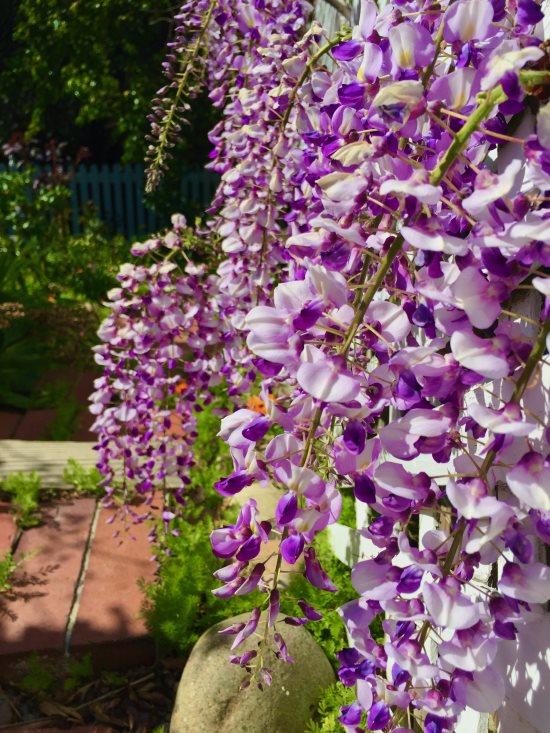 |
| A favorite of the April garden, wisteria springs into bloom. Photo Cynthia Brian |
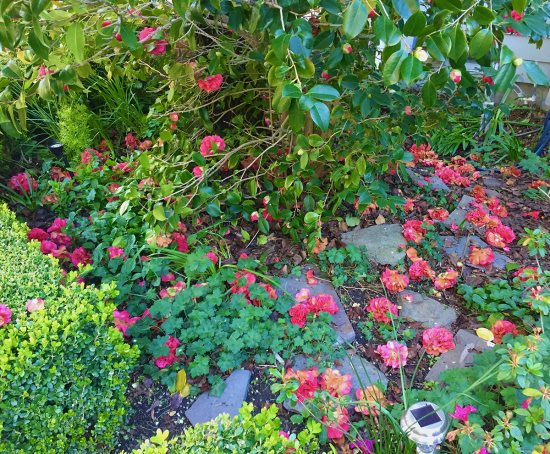 |
| After the wind, the camellia blooms carpet the ground and must be removed. Photo Cynthia Brian |
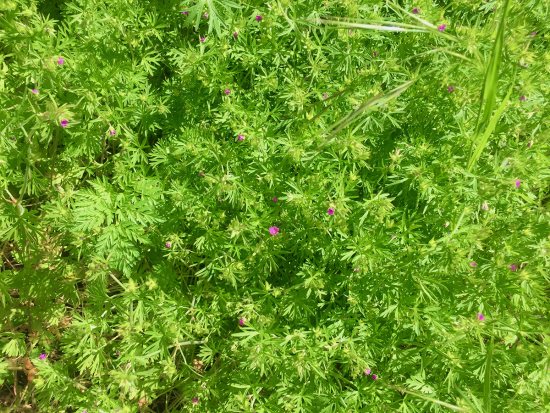 |
| The pretty palmate leaves and pink buds of Carolina geranium weed look like a ground cover. Photo Cynthia Brian |
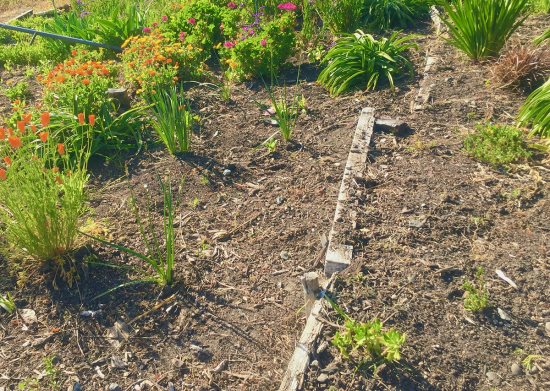 |
| The hillside is a bit barren after the weeds have been pulled. Photo Cynthia Brian |
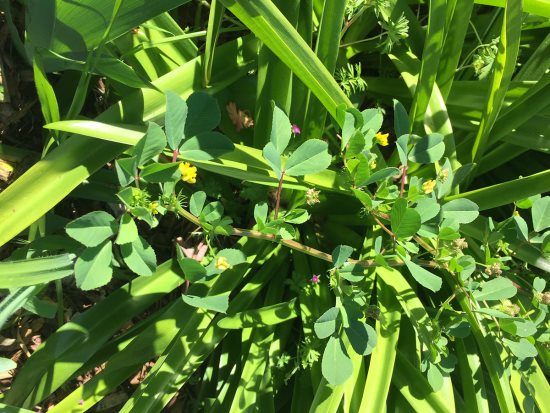 |
| The clover-like tendrils of Black medic weed entwine around the Naked Lady fronds. |
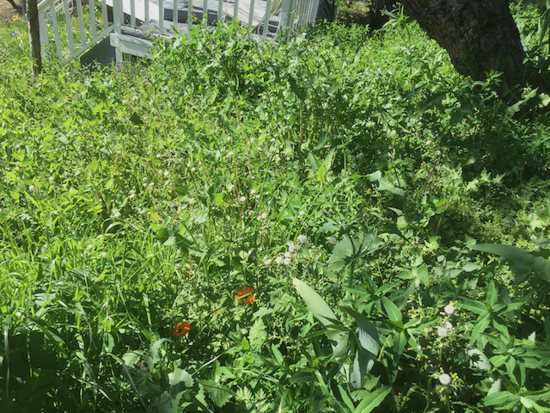 |
| Without enriched soil, thistles and other weeds thrive. |
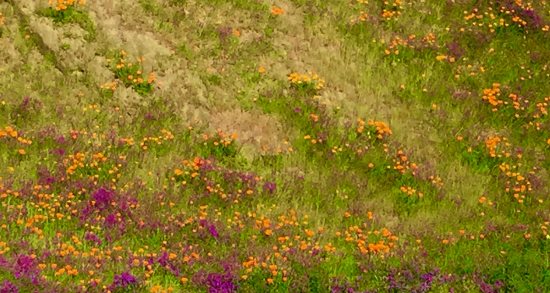 |
| A hillside of California poppies and purple vetch look like Impressionistic art. |
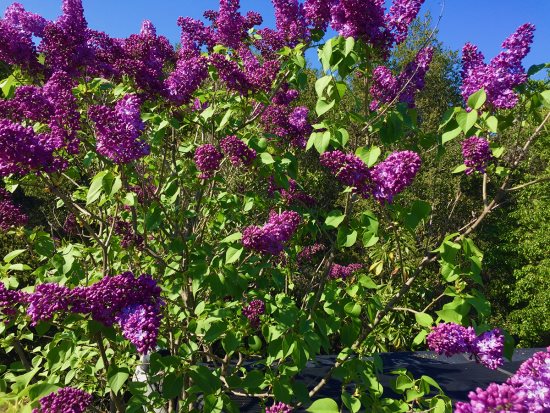 |
| Gorgeous lilacs perfume the garden. |
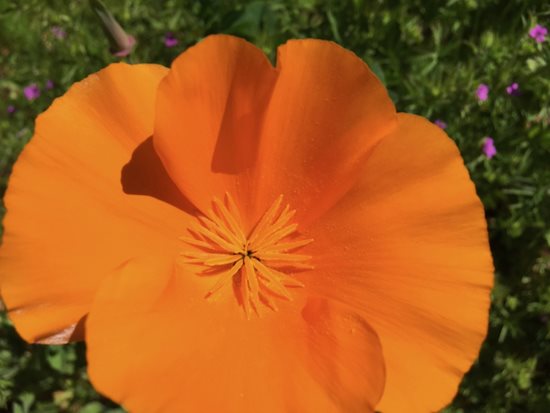 |
| The delicate orange petals of a California poppy are elegant. |
 |
| Cynthia Brian reminds gardeners to pick up fallen camellia flowers to avoid disease to the mother tree. |
| Cynthia Brian, The Goddess Gardener, is available for hire to help you prepare for your spring garden. Raised in the vineyards of Napa County, Cynthia is a New York Times best-selling author, actor, radio personality, speaker, media and writing coach as well as the Founder and Executive Director of Be the Star You Are!r 501 c3. Tune into Cynthia’s StarStyler Radio Broadcast at www.StarStyleRadio.com. Buy copies of her best-selling books, including, Chicken Soup for the Gardener’s Soul, Growing with the Goddess Gardener, and Be the Star You Are! Millennials to Boomers at www.cynthiabrian.com/online-store. Receive a FREE inspirational music DVD. Hire Cynthia for writing projects, garden consults, and inspirational lectures. Cynthia@GoddessGardener.com |
|
|
|
|
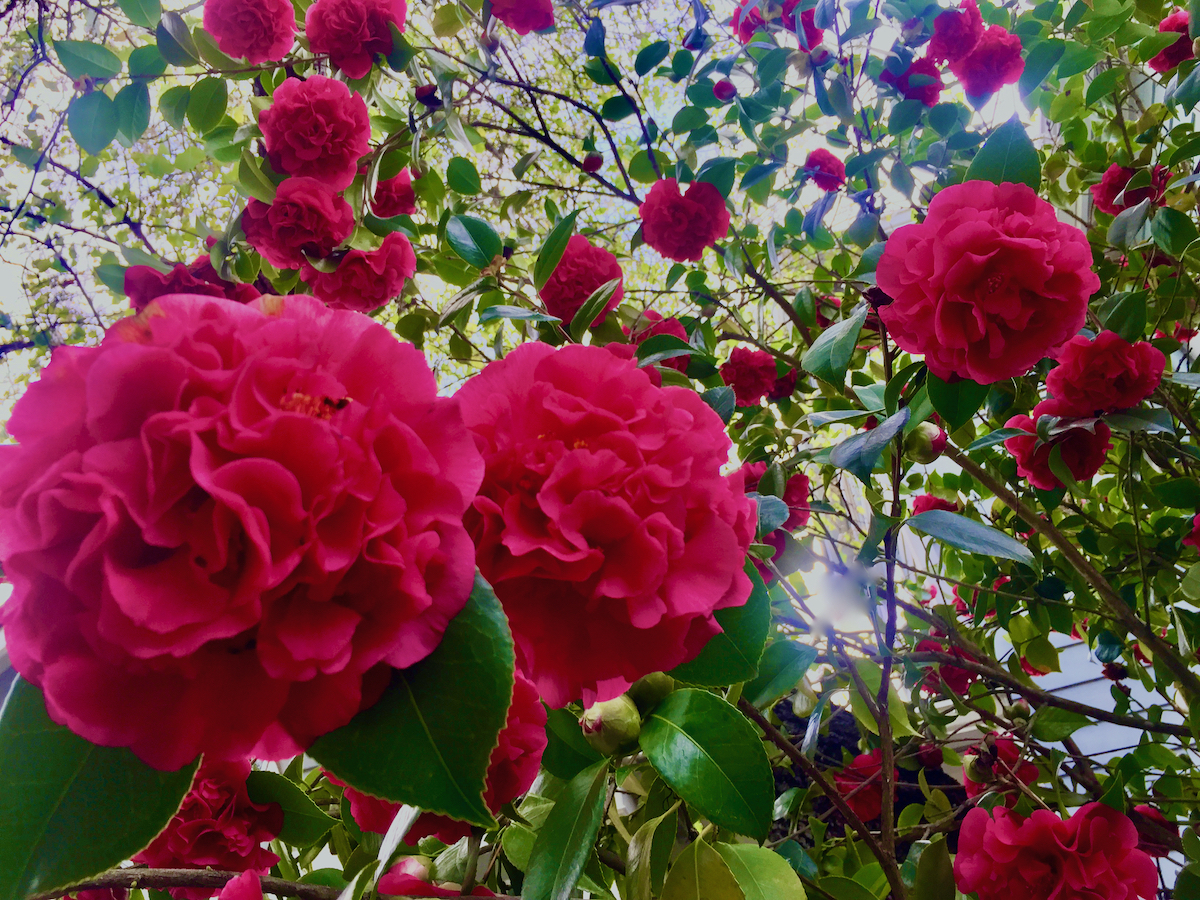 https://www.lamorindaweekly.com/archive/issue1504/Digging-Deep-with-Goddess-Gardener-Cynthia-Brian-Weeds-weeds-and-more-weeds.html
https://www.lamorindaweekly.com/archive/issue1504/Digging-Deep-with-Goddess-Gardener-Cynthia-Brian-Weeds-weeds-and-more-weeds.html
 https://www.lamorindaweekly.com/archive/issue1504/Digging-Deep-with-Goddess-Gardener-Cynthia-Brian-Weeds-weeds-and-more-weeds.html
https://www.lamorindaweekly.com/archive/issue1504/Digging-Deep-with-Goddess-Gardener-Cynthia-Brian-Weeds-weeds-and-more-weeds.html











